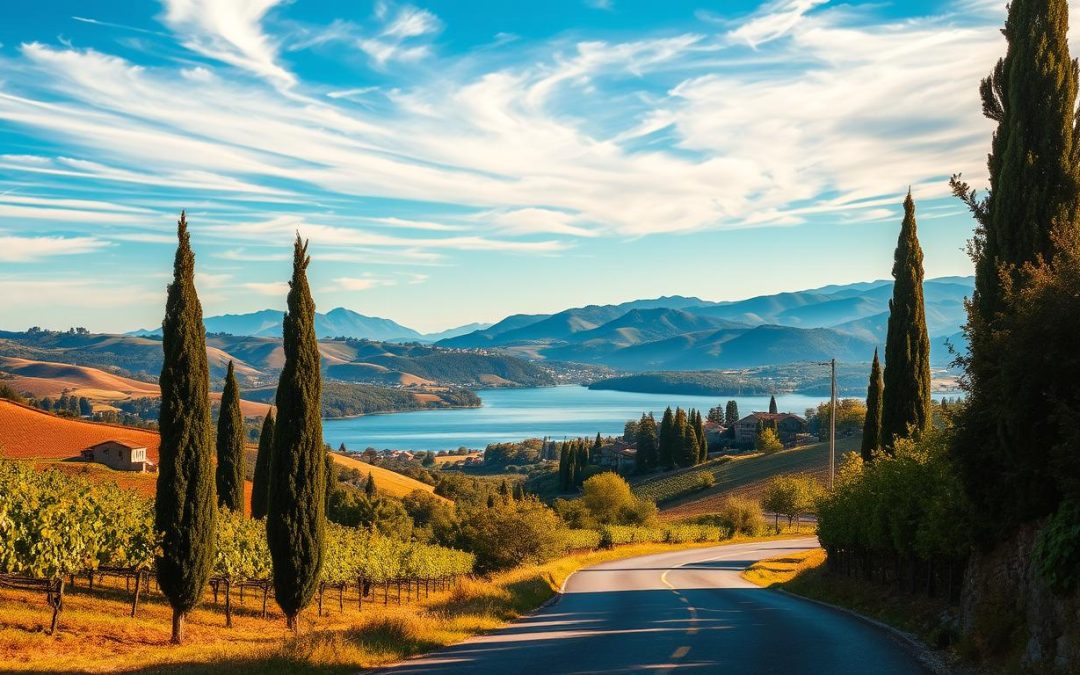Have you ever wondered when the best time is to explore a destination that offers everything from sunny beaches to snow-capped mountains? Planning a trip to a country with such diverse climates can be tricky, but understanding the seasonal patterns can make all the difference.
From the bustling streets of Rome to the serene canals of Venice, each region has its own unique charm. Whether you’re chasing the warmth of summer or the crisp air of autumn, knowing the right season to visit ensures you’ll enjoy every moment of your adventure.
This guide is here to help you navigate the best months for a weather-savvy trip. You’ll discover insider tips, must-see festivals, and how to make the most of your journey based on the season and location. Let’s dive in and plan your perfect getaway!
Key Takeaways
- Italy’s diverse climates range from Mediterranean warmth to cooler mountain regions.
- Understanding seasonal weather patterns enhances your travel experience.
- Fall and spring offer mild weather, fewer crowds, and lower prices.
- Major cities like Rome, Florence, and Venice have unique seasonal highlights.
- Harvest festivals and local events add cultural richness to your trip.
Introduction to Italy’s Seasonal Charm
Timing your visit to match the ideal season ensures a memorable trip. Every month brings a unique flavor to this destination, from sunny beaches to snow-capped peaks. Understanding the weather patterns helps you make the most of your journey.
Discovering Italy’s Unique Weather Patterns
From the bustling streets of Rome to the serene countryside, each region has its own climate. Summers are hot and dry, while winters are mild and rainy. Spring and autumn offer a perfect balance, with pleasant temperatures and fewer crowds.
Why Seasonal Timing Matters for Your Trip
Choosing the best time visit can make or break your experience. Pleasant weather ensures you enjoy outdoor activities without discomfort. Timing also helps you avoid peak tourist traffic, making your trip more relaxed and enjoyable.
“The right season turns a good trip into an unforgettable adventure.”
Whether you’re exploring historic landmarks or savoring local cuisine, the season shapes your experience. Reflect on your travel pace and preferences to plan the perfect getaway.
Understanding Italy’s Mediterranean and Micro-Climates
Exploring the diverse climates of this destination can greatly enhance your travel experience. From the snowy Alps in the north to the sun-soaked coasts in the south, the weather varies significantly across regions. This diversity creates unique opportunities for sightseeing and outdoor activities, depending on where and when you visit.
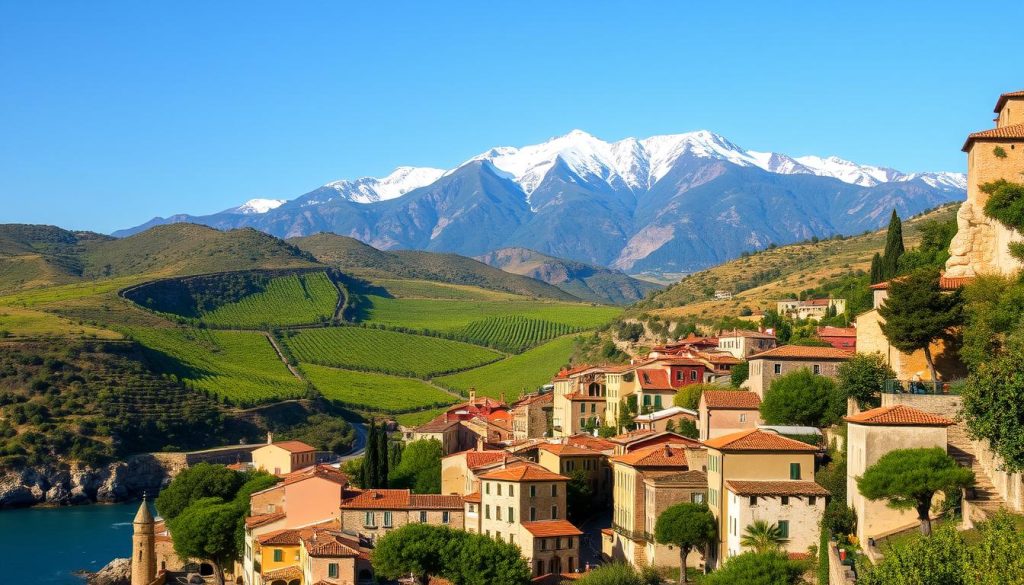
Regional Variations: North, Central, and South
The northern part of the country experiences colder winters, with snowfall common in the Alps. Cities like Milan often see foggy mornings during the colder months. In contrast, central regions enjoy milder winters and hot, dry summers. Rome, for example, can reach high temperatures in July and August.
Southern areas, including Sicily, are known for their warm, sunny weather year-round. However, winters here can be windy and rainy, especially along the coast. Understanding these regional differences helps you pack appropriately and plan activities that suit the weather.
Climate Change and Its Impact on Travel
Global climate change has led to more extreme weather patterns. Summers are becoming hotter, with cities like Venice experiencing record-breaking heatwaves. Winters are also shifting, with less snowfall in the north and unusual rain patterns in the south.
For instance, Venice’s acqua alta (high water) events are becoming more frequent due to rising sea levels. Similarly, Milan’s foggy winters are now interspersed with unseasonably warm days. These changes highlight the importance of staying updated on weather forecasts when planning your trip.
“Adapting to changing weather patterns ensures a smoother and more enjoyable journey.”
By understanding these nuances, you can better prepare for your adventure. Whether you’re exploring historic landmarks or relaxing on the coast, knowing the weather trends ensures a memorable experience.
Italy: Best Months for a Weather-Savvy Trip
Planning your journey around the ideal weather can transform your travel experience. Each month offers distinct advantages, whether you’re seeking sunny skies or cooler temperatures. Understanding these seasonal shifts helps you make the most of your adventure.
Overview of Optimal Weather Conditions
During the summer, temperatures often soar into the 30s°C, making it perfect for beachgoers. However, the heat can be intense, especially in cities like Rome or Florence. If you prefer milder weather, consider visiting in April or May. These months offer pleasant temperatures, blooming landscapes, and fewer crowds.
November, on the other hand, brings cooler, wetter weather. While rain is common, it’s also a quieter time to explore. With fewer tourists, you can enjoy iconic landmarks without the hustle and bustle.
How Seasonal Shifts Affect Your Experience
Seasonal changes impact everything from outdoor activities to sightseeing. In summer, long daylight hours allow for extended exploration, but the heat may limit midday outings. Shoulder seasons like April and May strike a balance, offering comfortable weather for hiking, cycling, and city tours.
November’s wetter conditions may require flexibility in your plans. However, it’s an excellent time to enjoy indoor attractions, local festivals, and truffle hunting in regions like Alba. Each month has its unique charm, so align your itinerary with your preferences.
| Month | Weather | Pros | Cons |
|---|---|---|---|
| April | Mild, blooming | Fewer crowds, pleasant temperatures | Occasional rain |
| May | Warm, sunny | Ideal for outdoor activities | Tourist numbers start to rise |
| Summer | Hot, dry | Long daylight hours, beach weather | Extreme heat, crowded attractions |
| November | Cool, rainy | Fewer tourists, unique festivals | Wet weather, shorter days |
By considering these factors, you can choose the best time to visit based on your travel style. Whether you’re chasing the sun or embracing the rain, each season offers something special.
Exploring Peak and Shoulder Seasons in Italy
Choosing the right time to visit can make your trip unforgettable. Understanding the differences between peak and off-season travel helps you plan a journey that suits your preferences. Whether you thrive in vibrant energy or prefer a quieter pace, each season offers unique advantages.
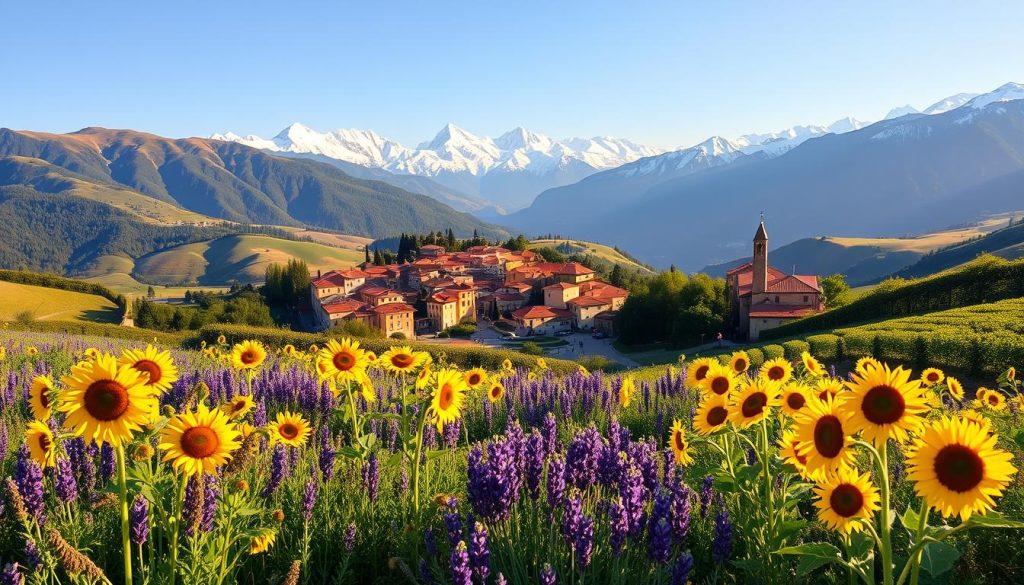
High Season Insights for Popular Destinations
Summer is the peak travel season, with bustling streets and lively atmospheres. Cities like Rome and Florence attract large crowds, and attractions often sell out months in advance. The long daylight hours are perfect for exploring, but the heat can be intense, especially in July and August.
During this time, prices for flights and accommodations soar. If you’re planning a holiday during the peak season, book early to secure your spot. While the energy is unmatched, be prepared for packed public transport and longer wait times at popular sites.
Benefits of Traveling Off-Season
Traveling off-season offers a more relaxed experience. With fewer tourists, you can enjoy iconic landmarks without the hustle and bustle. Destinations like the Amalfi Coast and Venice transform, offering a quieter, more intimate atmosphere.
Winter, in particular, is a great time to explore. Accommodation prices drop significantly, and you’ll find deals on flights. While some coastal towns may have closures, central and southern regions remain mild and accessible. Shorter daylight hours require strategic planning, but the trade-off is worth it for the serene experience.
“Traveling off-season lets you discover a destination’s true essence, away from the crowds.”
Shoulder seasons like spring and fall strike a balance. The weather is pleasant, and tourist numbers are manageable. You’ll also find local festivals and events that add cultural richness to your trip. By choosing the right season, you can create a personalized and memorable adventure.
Best Time to Visit Iconic Cities: Rome, Florence, and Venice
Exploring iconic cities like Rome, Florence, and Venice requires careful timing to avoid crowds and enjoy ideal weather. Each destination has its own unique climate and tourist trends, making it essential to plan your visit strategically. Whether you’re marveling at ancient ruins or strolling through historic streets, the right timing ensures a memorable experience.
City-Specific Weather and Tourist Trends
Rome is known for its sweltering summer heat, with temperatures often exceeding 30°C. Midday can be particularly intense, so plan outdoor activities for early mornings or evenings. Spring and fall offer milder weather, making them ideal for exploring landmarks like the Colosseum and Vatican City.
Florence, on the other hand, boasts a manageable climate year-round. Summers are warm but less extreme than Rome, while winters are mild. The city’s cultural heritage shines during shoulder seasons, when tourist numbers are lower, and you can enjoy the Uffizi Gallery without long waits.
Venice’s unique canal system creates its own micro-climate. Summers are humid, and winters can be chilly, but the city’s charm remains constant. Visiting in late fall or early spring allows you to experience the canals and St. Mark’s Basilica without the summer crowds.
| City | Best Time to Visit | Weather | Tourist Trends |
|---|---|---|---|
| Rome | April-May, September-October | Mild, pleasant | Fewer crowds, ideal for sightseeing |
| Florence | March-May, October-November | Warm days, cool nights | Moderate crowds, cultural events |
| Venice | March-April, October-November | Cool, less humid | Quieter, perfect for canal tours |
By understanding these city-specific trends, you can choose the best time visit for your adventure. Whether you’re drawn to Rome’s ancient history, Florence’s art, or Venice’s canals, strategic planning ensures a smooth and enjoyable trip.
Seasonal Recommendations for Italy’s Countryside and Coast
The countryside and coastal regions offer a refreshing escape from the hustle of city life. Whether you’re drawn to rolling vineyards or pristine beaches, these areas provide a unique blend of natural beauty and cultural richness. Timing your visit ensures you enjoy the best of what these regions have to offer.
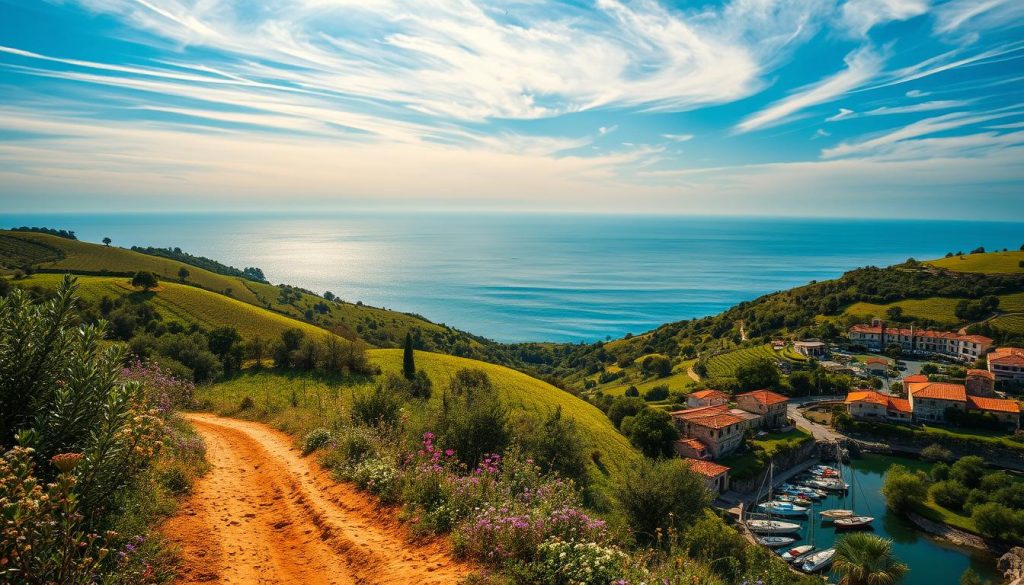
Enjoying Vineyards, Beaches, and Scenic Views
For those who love wine, the countryside is a paradise. September and October are ideal for vineyard tours, as this is when the grape harvest takes place. The weather is warm but not overly hot, making it perfect for exploring expansive vineyards and tasting local vintages.
If you’re a beach enthusiast, consider visiting coastal areas during the shoulder seasons. May and September offer pleasant weather with fewer crowds, allowing you to enjoy the sand and sea in peace. The water is warm enough for swimming, and the coastal drives are breathtaking.
Scenic views are abundant in rural areas, especially during spring and fall. Blooming landscapes in April and May create a picturesque backdrop for hiking or cycling. In autumn, the countryside transforms with vibrant foliage, offering a good opportunity for photography and outdoor adventures.
“Exploring the countryside and coast lets you experience the authentic charm of this destination.”
Day trips that combine outdoor activities with local food and wine tastings are highly recommended. The relaxed pace of rural and coastal regions allows you to savor the good moments of local culture. Whether you’re sipping wine in a vineyard or lounging on a quiet beach, these experiences create lasting memories.
By planning your travel around these seasonal highlights, you can enjoy the countryside and coast at their best. The combination of natural beauty, cultural experiences, and pleasant weather makes these regions a must-visit.
A Guide to Italy’s Local Festivals and Cultural Events
Immerse yourself in the vibrant culture of this destination through its local festivals and events. From food and wine celebrations to historical exhibits, these gatherings offer a unique glimpse into the traditions and lifestyle of the region. Timing your visit to coincide with these events can enrich your travel experience.
Food, Wine, and Harvest Celebrations
One of the highlights of visit Italy is its food and wine festivals. Events like the Chianti Classico Expo and Bra Cheese Festival showcase the country’s culinary heritage. These celebrations attract both locals and international visitors, offering a chance to taste regional specialties and learn about traditional production methods.
Harvest festivals, particularly in September and October, are another must-see. They celebrate the bounty of the land with wine tastings, grape stomping, and local food markets. These events provide a hands-on experience of the region’s agricultural traditions.
Regional Events and Museum Exhibits
Beyond festivals, regional events and museum exhibits play a crucial role in preserving history and art. The Venice International Film Festival, for example, highlights contemporary cinema while celebrating the city’s artistic legacy. Museums across the country host seasonal exhibits that delve into Italy’s rich cultural past.
Attending these events offers a more authentic view of local traditions. Whether it’s a historical re-enactment or a modern art showcase, each event adds depth to your understanding of the region’s heritage.
“Experiencing local festivals and events connects you to the heart of Italy’s culture and traditions.”
- Plan your visit Italy around major events like the Chianti Classico Expo or Bra Cheese Festival.
- Explore harvest celebrations to experience the region’s agricultural heritage.
- Visit museums and attend regional events to gain insight into Italy’s history and art.
- Time your trip to coincide with these cultural highlights for a richer travel experience.
By incorporating these events into your itinerary, you’ll not only enjoy the vibrant atmosphere but also create lasting memories of your journey. Whether you’re a foodie, history buff, or art lover, Italy’s festivals and cultural events have something for everyone.
Insider Travel Tips for a Weather-Savvy Journey
To make the most of your journey, timing your activities and avoiding peak hours can be a game-changer. By planning strategically, you can enjoy iconic landmarks without the hassle of long queues or overwhelming crowds. Here are some insider tips to help you navigate your adventure like a pro.
Strategies for Avoiding Crowds
One of the best ways to beat the crowd is to visit popular attractions early in the morning or later in the afternoon. Most travelers tend to arrive mid-morning, so you’ll have a quieter experience if you plan your tour outside these peak hours. For example, the Colosseum in Rome is less crowded before 9 AM or after 3 PM.
Another tip is to explore lesser-known spots. While iconic landmarks are a must-see, smaller attractions often offer equally stunning experiences without the hustle. Local transport can also help you avoid busy areas. For instance, taking a vaporetto in Venice during off-peak hours lets you enjoy the canals in peace.
Maximizing Your Sightseeing Opportunities
Creating a flexible itinerary is key to making the most of your time. Weather changes can be unpredictable, so having backup plans ensures you’re always ready. If it’s too hot midday, spend that time in air-conditioned museums or cafes. Later, when the temperature cools, head out for a relaxing stroll or evening tour.
Local insights can also enhance your experience. Ask residents for their favorite spots or hidden gems. They often know the best time to visit certain places, helping you avoid the busiest periods. By staying adaptable and informed, you’ll maximize every moment of your journey.
“A little planning and flexibility can turn a good trip into an extraordinary adventure.”
These strategies not only help you avoid crowds but also allow you to immerse yourself fully in the destination. Whether you’re exploring historic sites or enjoying local culture, these tips ensure a smooth and memorable experience.
How to Dress and Pack for Italy’s Seasonal Weather
Packing smartly for your trip ensures you’re ready for any weather surprises. Whether you’re visiting in July or braving the winter chill, the right clothing and accessories can make all the difference. Layering is key, as temperatures can shift dramatically between day and night.
Essential Clothing and Layering Tips
For summer travel, lightweight layers are your best friend. Opt for breathable fabrics like cotton or linen to stay cool on a sunny day. A light jacket or cardigan is perfect for cooler evenings. In winter, thermal layers and a warm coat are essential, especially in northern regions.
When visiting religious sites, modest attire is a must. Shoulders and knees should be covered, so pack a scarf or shawl for versatility. Comfortable walking shoes are a must, whether you’re exploring cobblestone streets or hiking in the countryside.
Must-Have Accessories for Any Season
Accessories can enhance your comfort and style. A collapsible umbrella is a lifesaver for unexpected rain, while a wide-brimmed hat protects you from the summer sun. In winter, gloves and a warm scarf are indispensable for staying cozy.
Don’t forget practical items like a reusable water bottle and a compact backpack for day trips. These small additions can make your journey smoother and more enjoyable.
“The right clothing and accessories ensure you’re prepared for every adventure, rain or shine.”
- Lightweight layers for summer warmth
- Thermal clothing for winter chills
- Scarf or shawl for modesty and versatility
- Comfortable walking shoes for all-day exploration
- Collapsible umbrella for unexpected rain
Budgeting Your Italian Adventure: Travel and Accommodation
Planning your Italian adventure doesn’t have to break the bank if you know when and how to book. Travel and accommodation prices can vary dramatically depending on the time year you visit. By understanding these seasonal trends, you can save money without sacrificing the quality of your experience.
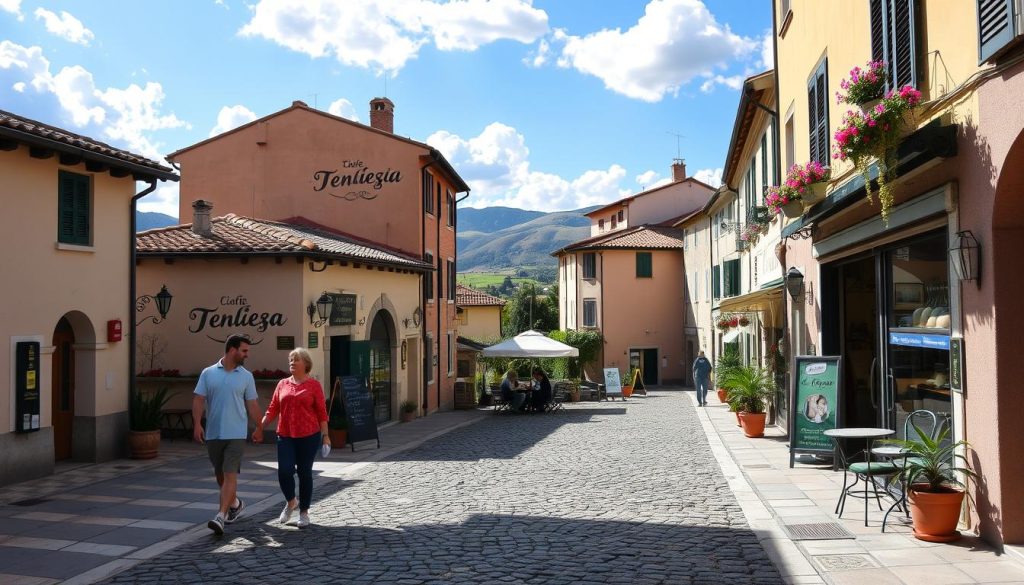
Finding Deals During Different Seasons
During peak seasons like summer, prices for flights and hotels can skyrocket. However, traveling during off-peak months like November or early spring can lead to significant savings. For example, flights and accommodations can be up to 30% cheaper during these quieter periods.
Booking early is another smart strategy. Many airlines and hotels offer discounts for reservations made months in advance. Alternatively, last-minute deals can also be a great way to save, especially if you’re flexible with your travel dates.
Comparing prices across multiple travel sites is essential. Platforms like Skyscanner or Kayak allow you to find the best deals on flights and accommodations. Don’t forget to check for hidden fees before finalizing your booking.
Lower tourist density during off-peak months not only means better prices but also a more relaxed experience. You’ll have more space to explore iconic landmarks without the crowds, making your trip more enjoyable.
“Traveling smart means saving money while still enjoying every moment of your adventure.”
- Book flights and accommodations early for the best deals.
- Consider traveling during off-peak months to save up to 30%.
- Use comparison sites to find the lowest prices.
- Take advantage of last-minute deals if you’re flexible.
- Enjoy quieter attractions and lower costs during less busy periods.
By following these tips, you can budget your Italian adventure effectively. Whether you’re exploring bustling cities or serene countryside, smart planning ensures you get the most out of your trip without overspending.
Planning Your Ultimate Italian Adventure
Crafting the perfect adventure means balancing vibrant city energy with serene countryside escapes. Whether you’re exploring historic landmarks or unwinding in a vineyard, timing and flexibility are key to a memorable journey.
Mixing City Tours with Relaxing Escapes
Start your trip with a day in bustling cities like Rome or Florence. These destinations are perfect for sightseeing, but the energy can be intense. After a few days, retreat to quieter areas like Tuscany or the Amalfi Coast for a change of pace.
For example, pair a morning at the Colosseum with an afternoon vineyard tour. This blend lets you experience the best time of both worlds—cultural richness and natural beauty. In june or august, plan city tours early in the day to avoid the midday heat.
- Combine Rome’s historic sites with a day trip to Tuscany’s rolling hills.
- Explore Florence’s art galleries, then relax on the beaches of Cinque Terre.
- Visit Venice’s canals before heading to the quiet countryside of Val d’Orcia.
Designing a Flexible Itinerary
Flexibility is essential when planning your adventure. Weather can change quickly, especially in fall, so having backup plans ensures you’re always ready. If it’s too hot in august, swap outdoor activities for indoor museums or wine tastings.
Consider traveling during shoulder seasons like june or early fall. These months offer milder weather and fewer crowds, making it easier to adapt your plans. For instance, if rain interrupts your coastal hike, explore a nearby village or enjoy a leisurely lunch at a local trattoria.
“A flexible itinerary lets you embrace spontaneity and make the most of every moment.”
Reserve downtime in your schedule to truly savor the experience. Whether it’s a quiet afternoon in a vineyard or a stroll through a historic town, these moments often become the highlights of your trip.
Conclusion
Your adventure begins with the right timing and thoughtful planning. Understanding seasonal weather patterns ensures you enjoy every moment, whether you’re exploring Rome’s historic streets or relaxing in the countryside. The best time visit balances pleasant weather, fewer crowds, and unique cultural experiences.
From packing essentials to budgeting tips, small details make a big difference. Layering for changing temperatures or booking accommodations early can save you time and money. These strategies let you focus on creating unforgettable memories.
Ready to start your journey? With the insights from this guide, you’re equipped to plan a seamless and enriching trip. Seize the time visit that suits your style, and get ready to experience the magic of this destination.
The above is subject to change.
Check back often to TRAVEL.COM for the latest travel tips and deals.
Here are some Tours & Sightseeing suggestions that might pique your interests!
